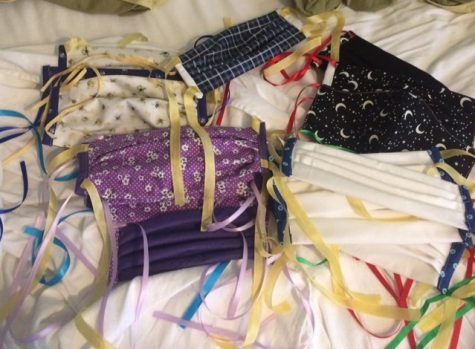Ceramics students gain insight at East Creek kiln
Over three November weekends, seven students from the LOHS ceramics program have traveled to a secluded, old growth rurality of Hillsboro to participate in this fall’s ceramic woodfiring at the East Creek anagama kiln. Since LOHS’ first participation in the firing four years ago, the opportunity has exposed dozens of creatively-oriented students to a real-life artistic opportunity.
The kiln’s owner, Joe Robinson, is a former student of ceramics teacher Amy Burnham and has been facilitating East Creek’s firings since 2005; prior to his ownership, East Creek served as an artists’ compound. Students from other schools have participated in these firings, too, including those from Lakeridge, Grant and Sherwood.
One LOHS participant was senior Lance Pancoast. “Seeing a couple of wood fired pieces piqued my interest,” he said, “so I decided to go along.” At East Creek, Pancoast and other students chopped wood, “fed” the kiln’s flame on shifts, and met the broader ceramics community.
As opposed to a conventional ceramic firing that involves an electric kiln, anagama (Japanese for “cave kiln”) woodfiring harnesses natural processes: it uses a massive outdoor kiln to sweep an inflow of wood ash across ceramic pieces.
An ancient Japanese process, the firing demands nonstop attention–“feeding” the kiln with wood and kindling. The kiln itself, roughly 20 feet long, is built into the side of a hill and layered with concrete to insulate its heat. At the front of the kiln, a thick steel plate connected to a swinging wire allows participants to throw chopped wood into the fire. Inside the kiln’s tunnel, that fire will grow to roughly 2200 degrees Fahrenheit. The flame is so bright, in fact, that it has the potential to damage a person’s corneas, so participants wear sunglasses. Directly past the fire, hundreds of ceramic pieces lay on dozens of shelves to collect ash. The clay’s silica (glass) combined with wood ash, melting to create the precious, unique natural glaze that is so highly sought-out by ceramic artists. Some ceramic artists use woodfiring as a means of experimentation: cedar and oak, for example, create different color ash and therefore different glazes.
Although the East Creek anagama kiln is only one of a few of its kind in the western United States, it is not exclusive to professional artists, but those who are simply passionate about ceramic art.
Said Pancoast, “woodfiring isn’t an elite club of the diehard ceramics students. Everyone at the firing is committed to creating their best art…and that creates a sense of community and unity like no other.”



